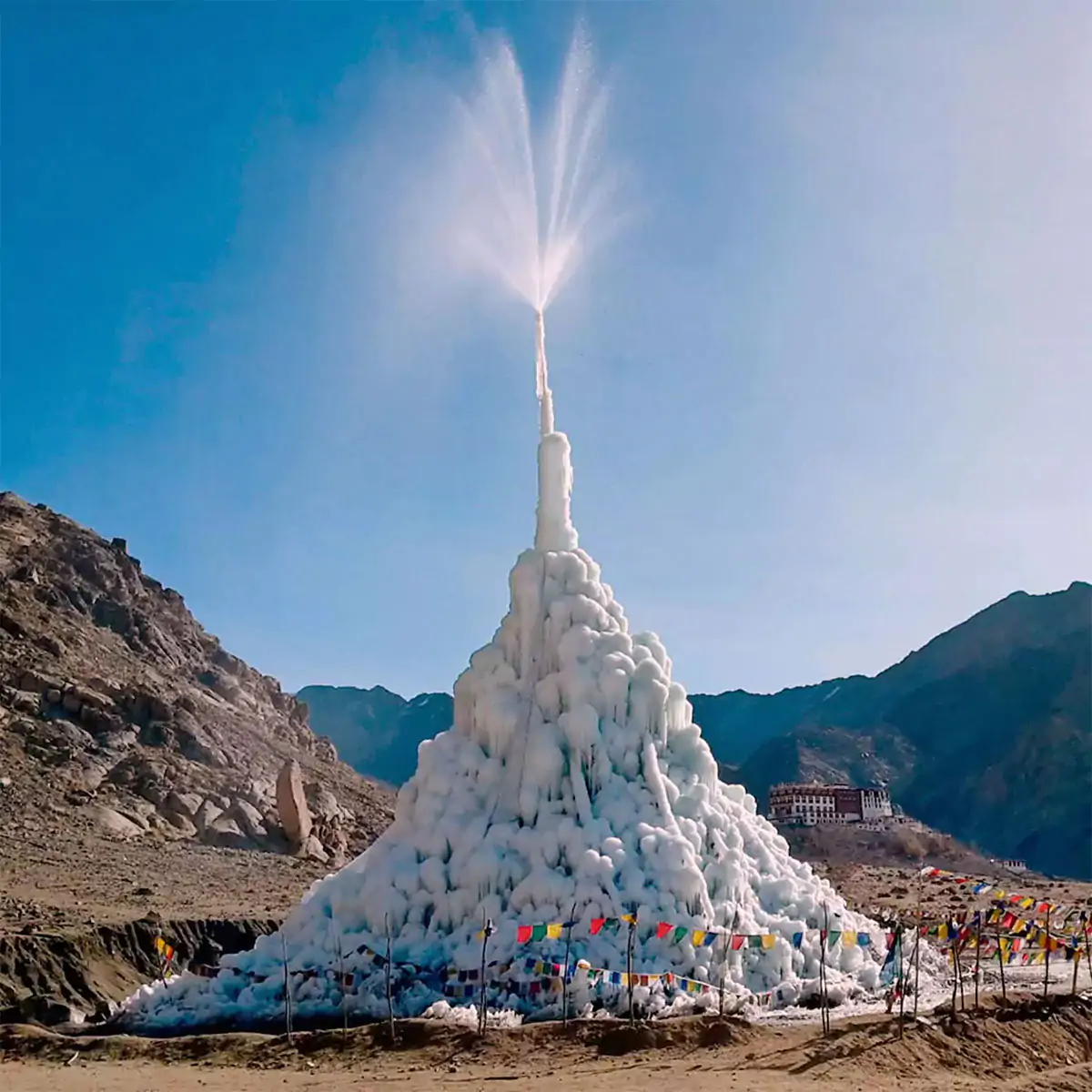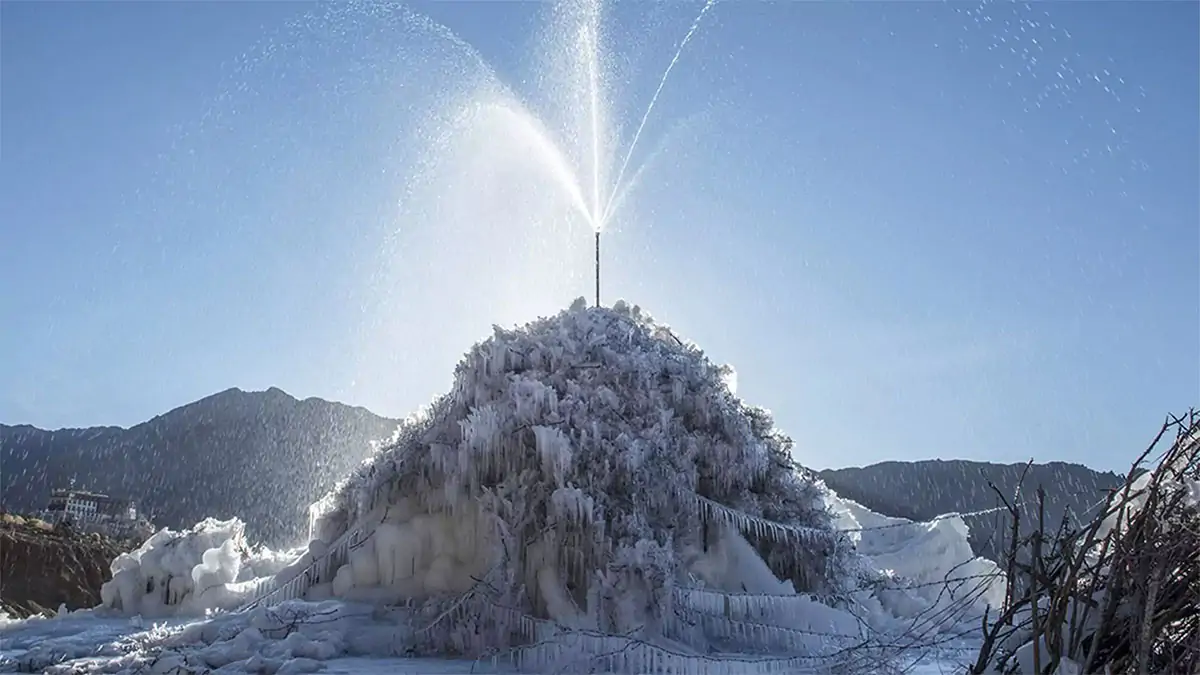Thanks to ingenuity, we’re used to seeing how mankind is capable of adapting to adverse situations and conditions, however it is something that never ceases to surprise us.
In India, local engineer Sonam Wangchuk has developed a way of combating drought during the start of spring, by creating artificial glaciers. His idea is based on making use of the cold weather and frosts that occur in the landscapes of Ladakh, in the north-west of the country.
The chance of observing one sunny day how a piece of ice remained frozen in the shade of a bridge, and inspired by cultural monuments, lead him to design a conical ice structure. In this way, the conical “glacier” provides shade to itself and it takes longer to melt. The aim of this artificial glacier is just to maintain the supply of water for crops when it is most needed.

When temperatures fall dramatically, the work begins on forming the glaciers. River water is collect through hoses and is driven towards forming the conical structures, thanks to the unevenness of the terrain. The beginning of spring, with its high temperatures in areas of lower altitude, brings droughts that are combatted with the progressive melting of these glaciers, storing and distributing water directly to the crops.
One more example of sustainable development and adjustment to the environment.






